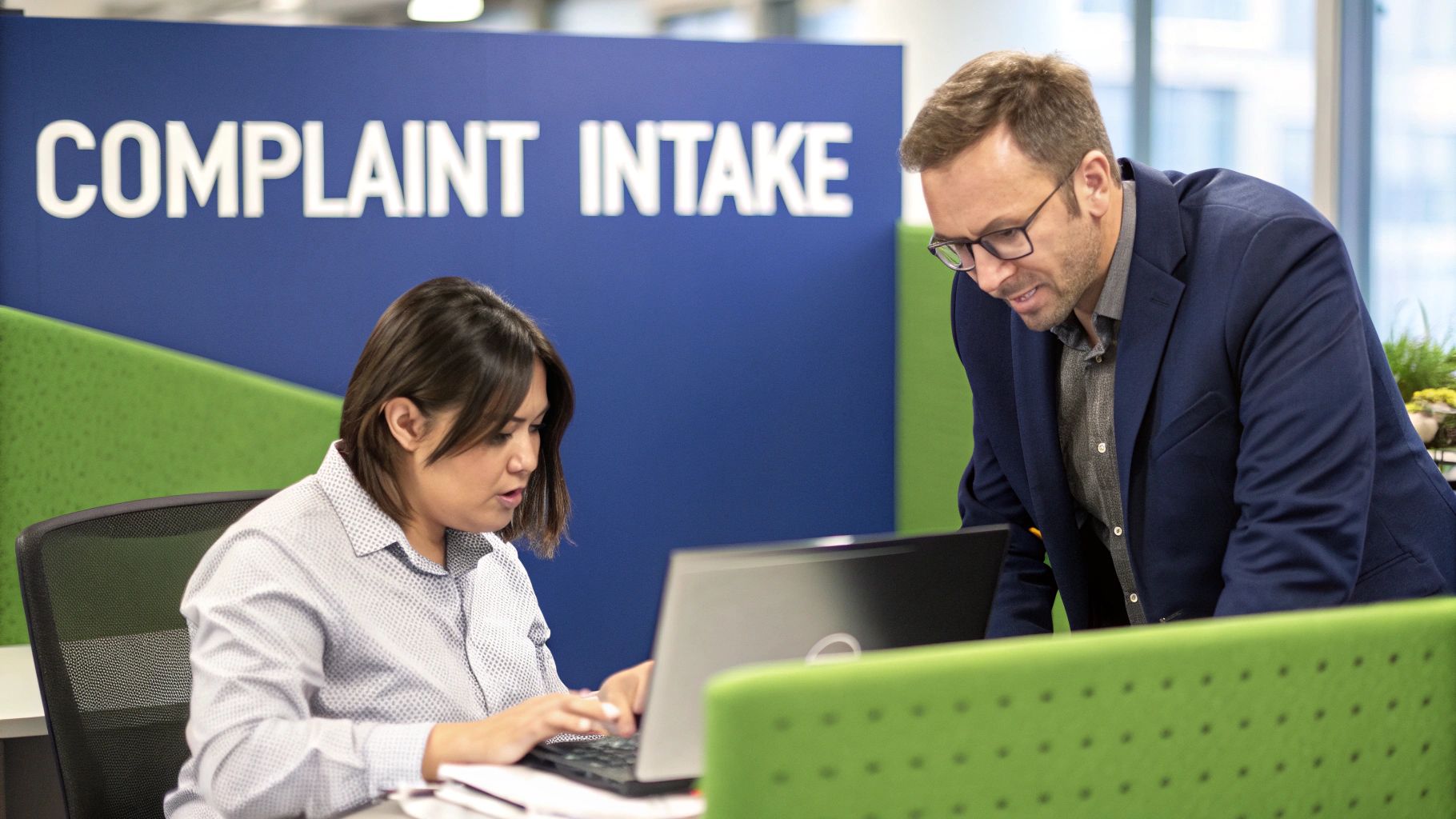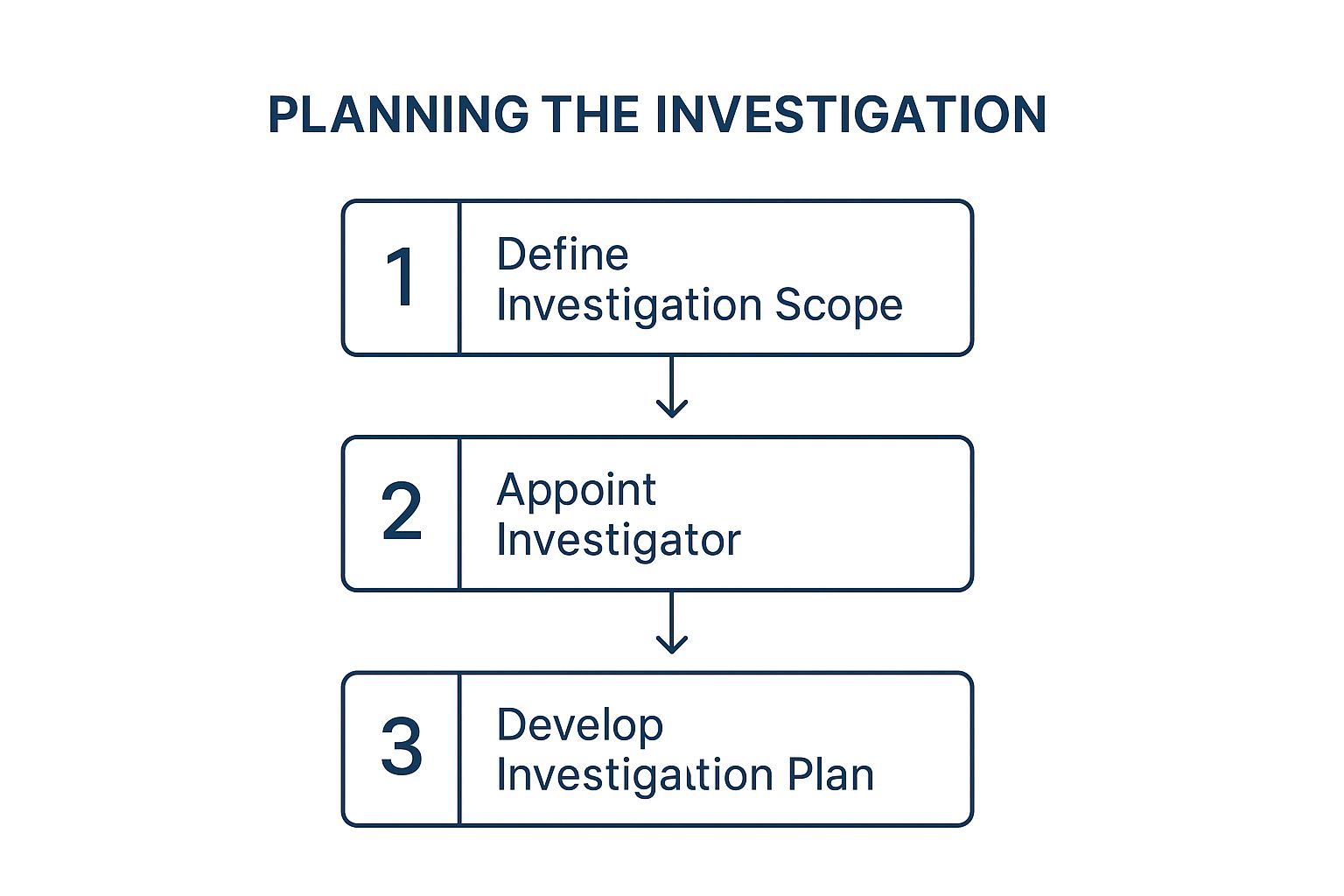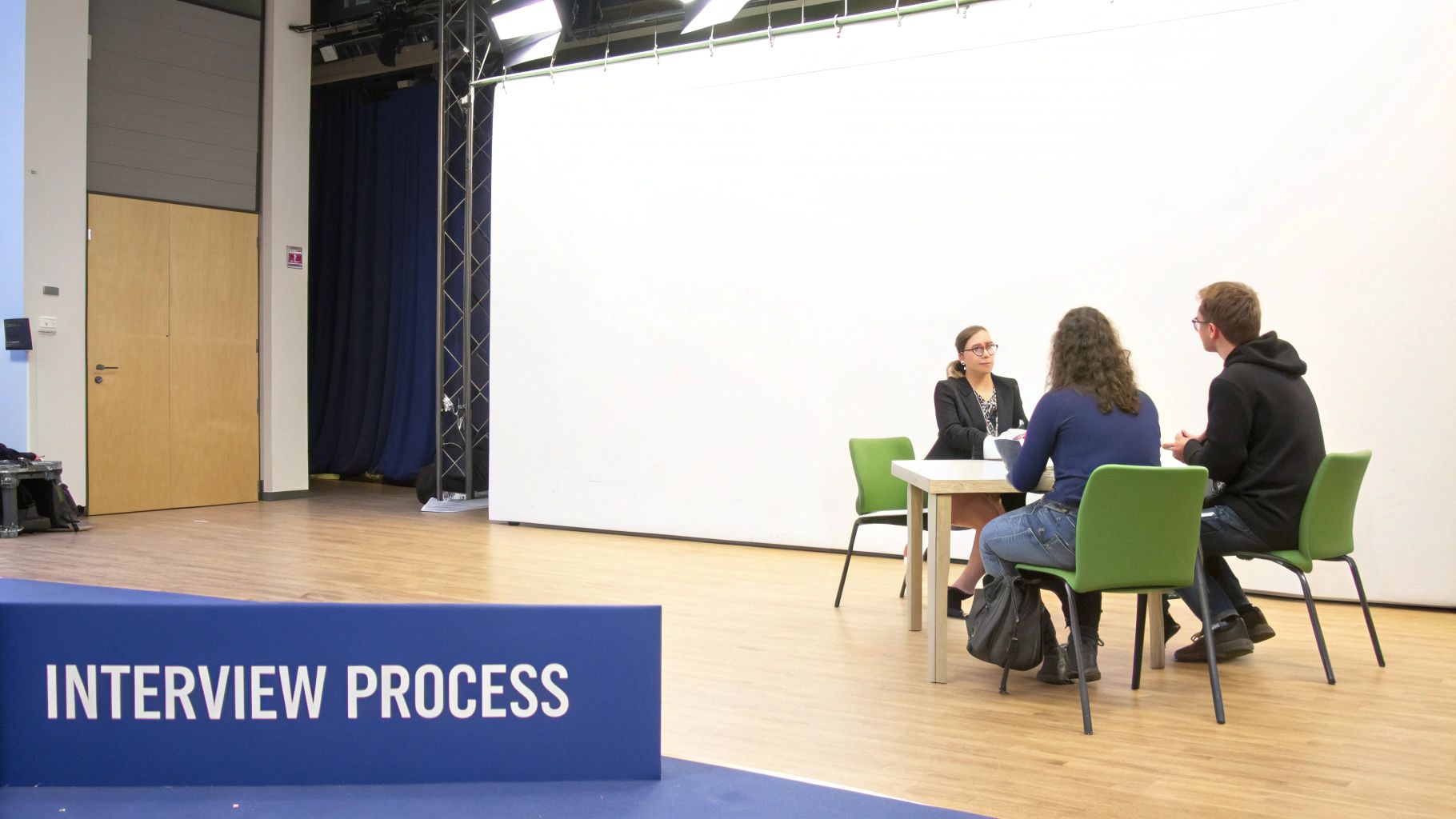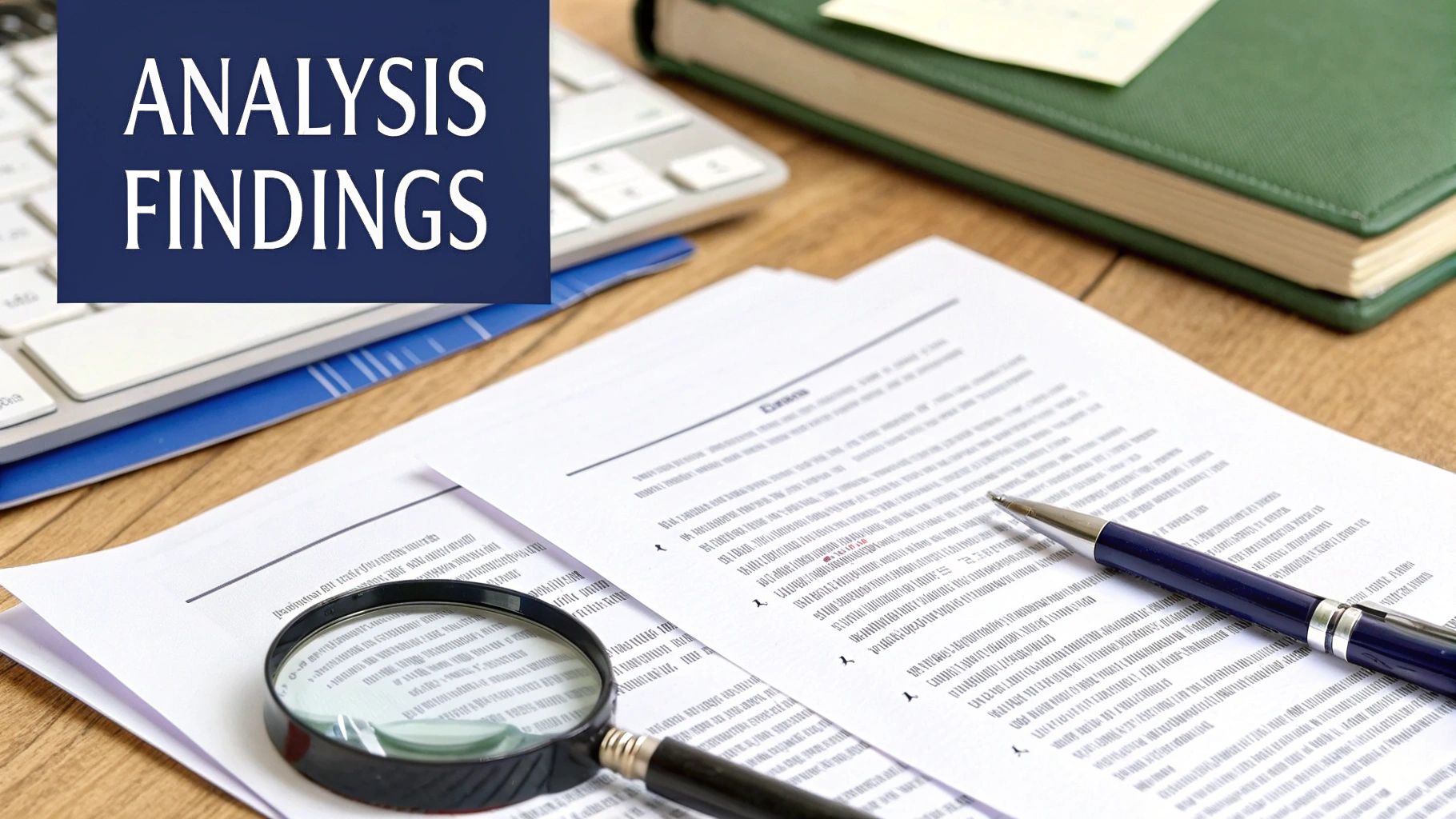Ultimate Guide to the Workplace Investigation Process
- Showix technical Team
- Jul 13
- 14 min read
Updated: Jul 26
When a formal complaint from an employee hits your desk, the clock starts ticking on your workplace investigation process. How you handle these first few moments is crucial and requires your full, careful attention. Getting these initial steps right is the bedrock of a fair, legally compliant, and objective investigation for everyone involved.
Setting the Stage for a Fair Investigation

The first few hours after receiving a complaint are often the most important. Your immediate actions set the entire tone, directly impacting the credibility and legal standing of the whole process. Moving quickly but methodically from the get-go is the best way to avoid simple procedural mistakes that can completely derail an investigation later on.
Your very first job is to get a sense of how serious the allegation is. Let's be realistic: not every grumble warrants a full-scale formal investigation. A small tiff over project deadlines might be sorted out with a simple mediation, but a serious accusation like harassment, discrimination, or theft absolutely demands a formal, structured response.
Triage the Complaint
Learning to distinguish between a minor grievance and a serious allegation is a skill you have to develop. Imagine an employee complains their manager is micromanaging their every move. In many cases, this could be handled informally, perhaps with a quiet, facilitated chat between the two of them.
On the other hand, if an employee comes to you saying they saw a colleague deliberately falsifying safety records, that's a different beast entirely. It’s a serious breach that could have massive consequences and requires a formal investigation right away. Incidents like this are why having robust workplace safety procedures is so important; they provide the clear rules that people may be accused of breaking. Ignoring serious claims like these opens your organisation up to huge legal and operational risks.
Selecting the Right Investigator
Once you've decided a formal investigation is the only way forward, you need to decide who will lead it. This is a critical choice. The investigator must be impartial and have no personal or professional stake in the outcome.
An investigator’s impartiality is non-negotiable. Their role is to be a neutral fact-finder, not to prove or disprove the complaint. Any perception of bias, whether real or imagined, can undermine the entire process.
This can be a real headache in smaller companies where everyone knows everyone. If you don't have a manager who is truly detached from the people involved, bringing in an external investigator is almost always the smartest move. It doesn't just guarantee objectivity; it also brings a level of specialised expertise to the table. For a deeper dive, our comprehensive guide offers more on navigating a workplace investigation.
Creating a Preliminary Plan
With an investigator in place, the last piece of the initial setup is to sketch out a basic plan. It doesn't need to be a masterpiece of detail at this point, but it should map out the immediate road ahead.
Your plan should cover:
Initial Scope: What, specifically, is the core allegation you're investigating?
Key Individuals: Who is the person making the complaint, who is it about, and are there any obvious witnesses to speak with first?
Interim Measures: Do you need to do anything right now to separate the employees involved or secure evidence while the investigation is ongoing?
Putting together a simple timeline also helps manage everyone's expectations and shows you are dealing with the issue "without unreasonable delay," which is a key principle in UK employment law. This initial groundwork ensures you start the workplace investigation process on a solid footing, ready to move forward with confidence.
Building Your Investigation Plan
Once you've decided a formal investigation is needed, it's tempting to jump straight into questioning people. Don't. Taking the time to build a solid plan is the single most important thing you can do to ensure the process is fair, thorough, and legally sound. Without a roadmap, you're just inviting chaos. You risk getting sidetracked, missing crucial evidence, or losing control of the entire situation.
Think of your plan as the blueprint for the investigation. It keeps you focused, prevents the scope from ballooning into unrelated issues, and helps you manage everyone's expectations from the outset.
The basic flow of getting ready for an investigation looks something like this:

As you can see, before you can even think about the finer details of the plan, you first have to define what you're actually looking into and get the right person to lead the investigation.
Define the Scope of the Investigation
First things first: you need to be crystal clear about what you are investigating. What is the precise allegation? Which company policies might have been breached? You need to write this down. A clear, written scope statement is your anchor, keeping the investigation from drifting into irrelevant territory.
Let's say an employee claims their manager has been using a company credit card for personal shopping. Your scope is strictly about that specific claim. It's not a free pass to start digging into the manager's timekeeping, performance reviews, or anything else. Sticking to a tight scope is vital for fairness and helps you avoid any perception of a "witch hunt". It's a fundamental part of why corporate investigations are crucial for business integrity.
Identify Key People and Evidence
Next up, draw up a list of who you need to speak with. This will obviously include the person who made the complaint (the complainant) and the person it's about (the respondent). But you need to think wider.
Who else could hold a piece of the puzzle?
Colleagues who might have seen or heard something.
Team members who were perhaps affected by the alleged actions.
IT staff, who might hold the keys to digital evidence.
At the same time, you should start thinking about what kind of evidence you'll need. In our credit card misuse example, you'd be looking for:
Expense reports and corresponding receipts.
Company credit card statements.
Emails or messages where the spending was discussed or approved.
Potentially even CCTV footage if the purchases were made physically nearby.
Remember, your job isn't to prove someone is guilty. It's to gather the facts, whatever they may be. I always recommend keeping a detailed evidence log. It’s a simple but invaluable tool to track every document or file—noting what it is, where you got it, and when.
Don't underestimate how often these situations arise. A recent UK survey found that while 69.12% of companies run between one and five investigations a year, a significant 30.88% handle even more. This just goes to show why having a structured workplace investigation process is not a luxury, but a necessity. The Safecall Workplace Investigations Survey 2025 has some fascinating data on this if you want to dig deeper.
Establish a Timeline and Organise Your Approach
Finally, map out a realistic timeline. It's a balancing act. Investigations must be completed promptly, but rushing can lead to mistakes. Being thorough is always more important than being fast.
Set out the key stages: when you aim to complete all interviews, when you'll have the evidence reviewed, and when you expect to finalise your report. A clear schedule shows professionalism and ensures every part of the workplace investigation process gets the attention it deserves.
Here's a breakdown of what a solid investigation plan should always include.
Key Elements of an Investigation Plan
A well-structured plan is your best defence against claims of a flawed or biased process. It demonstrates a commitment to fairness and thoroughness from the very beginning. The table below summarises the essential components to include.
Component | Purpose and Key Considerations |
|---|---|
Investigation Scope | Clearly state the specific allegations being investigated and the policies that may have been breached. This prevents "scope creep" and keeps the focus tight. |
Investigator(s) | Name the appointed investigator(s) and confirm they are impartial and have the necessary skills. Document why they were chosen. |
List of Interviewees | Identify the complainant, respondent, and any potential witnesses. This list may grow as the investigation progresses. |
Evidence Plan | Outline the types of evidence you need to collect (e.g., emails, documents, CCTV, witness statements). Plan how you will securely gather and store it. |
Timeline | Set out key milestones and a realistic end date. This manages expectations and ensures the investigation proceeds without unnecessary delays. |
Communication Plan | Define who needs to be updated, when, and how. This includes interim updates for the complainant and respondent, as well as communication with senior management. |
Confidentiality | Explicitly state the commitment to confidentiality for all parties involved, reminding everyone of their obligations. |
Final Report Outline | Sketch out the structure of the final report. This helps ensure you gather all the information needed to make clear, evidence-based findings. |
By thinking through these elements before you start, you create a robust framework that will guide you through even the most complex and sensitive workplace issues.
Conducting Effective Investigation Interviews
This is where the real work begins. Interviews are the heart and soul of any workplace investigation. You’re moving beyond the paper trail of emails and policies to get to the human side of the story. Your success hinges on one thing: creating an atmosphere where people feel safe enough to tell you what really happened.
Proper preparation is everything. Never walk into an interview cold. You need a solid list of open-ended questions designed to get people talking. Steer clear of simple "yes" or "no" questions. For instance, instead of asking, "Did you see Mark shout at Sarah?" you'll get far more by asking, "Could you walk me through what you saw and heard in the office on Tuesday morning?" The second version opens the door for a narrative, which is pure gold for an investigator.
Structuring the Interview
Every interview has a different purpose, so you can't use a one-size-fits-all approach. How you speak with the person raising the concern will naturally differ from how you approach the person being accused or a third-party witness.
Interviewing the Complainant: The main goal here is to get a complete and detailed picture of the allegations. Build some rapport, listen without interrupting, and gently probe for specifics. Questions that build a timeline are your best friend: "When did this first start?" "Where exactly did this happen?" "Was anyone else there at the time?"
Interviewing the Subject of the Complaint: This conversation requires a careful, measured touch. You must clearly explain the allegations against them and give them a genuine opportunity to respond to every point. Your job isn't to judge; it's to listen and understand their perspective.
Interviewing Witnesses: Witnesses are often hesitant to get involved. You'll need to reassure them about confidentiality and explain why their objective account is so important. Keep your questions focused on what they personally saw or heard—not on gossip, opinions, or what someone else told them.
The need for these interviews often stems from deeply serious issues. Take workplace discrimination, for example, which is still a major problem in the UK. A 2025 survey from Ciphr revealed that a shocking 45% of UK adults have experienced some form of discrimination at work. You can discover more about these workplace discrimination statistics to see just how common these situations are.
Questioning Techniques and Active Listening
The evidence you gather is only as good as the questions you ask. Always stick to those open-ended questions that encourage a story, not a one-word answer.
Imagine you're investigating a harassment claim. A leading question like, "Did you think that comment was inappropriate?" puts words in the witness's mouth. A much better, more neutral question is, "What was your reaction to the comment you heard?" This captures their authentic response without you steering it.
A common mistake I see is investigators talking too much. Your role is to listen. Pay attention not just to the words being said, but to body language and what isn't being said. Sometimes, a long pause or a hesitant answer tells you more than a direct statement.
As soon as an interview is over, write up your notes. Do it immediately while the conversation is still fresh in your mind. These notes are a crucial piece of evidence. Make sure you document the date, time, location, and everyone who was in the room. A thoroughly documented interview is the foundation of a solid, defensible investigation.
Getting to Grips with the Evidence

Interviews give you the story, but hard evidence gives you the foundation. It’s the difference between a flimsy conclusion and one that holds up under pressure. A proper workplace investigation process is all about methodically gathering and analysing information, moving beyond the "he said, she said" and into the realm of fact.
The evidence you need can come from all sorts of places. Your initial plan should have mapped out the obvious sources, but stay flexible. New leads will pop up as you dig deeper. The goal is simple: find anything that can either support or challenge the stories you're hearing.
What Kind of Evidence Should You Look For?
You’re unlikely to find a single "smoking gun" document. More often, you’re piecing together a mosaic of information from different sources to see the whole picture.
Here’s what I typically look for in an investigation:
Digital Trails: Think emails, instant messages from platforms like Microsoft Teams, and even social media posts if they're relevant to the workplace conflict.
Paper Trails: Don't forget the physical stuff. Performance reviews, time sheets, expense receipts, and signed HR policy forms can all provide powerful context.
System Data: In cases involving data misuse or other digital misconduct, things like computer login times, building access logs, and company phone records can be crucial.
Visuals: CCTV is the classic example. It can be incredibly helpful, but be careful. Analyse what the footage actually shows, not what you think it implies.
For every single piece of evidence you collect, you must maintain a clear chain of custody. This is just a formal way of saying you need a log. Note what you found, where you found it, and when you took possession of it. This isn't just bureaucracy; it's what makes your evidence credible and your investigation defensible.
Dealing with Contradictions
You will find conflicting information. It’s a given. A witness statement might directly contradict an email, or two people will describe the same meeting in completely different ways. This is where your skill as an investigator really comes into play. Don't panic and don't pick a side. Your job is to weigh everything.
In the UK, the standard of proof for workplace investigations is the 'balance of probabilities'. This is a much lower bar than the 'beyond a reasonable doubt' used in criminal law. You just need to decide whether it's more likely than not—a greater than 50% chance—that the incident happened as alleged, based on all the evidence.
Let's say you have an email where a manager is praising an employee, but you also have a witness statement claiming that same manager has been bullying them for months. You have to weigh both. Is the email's praise specific or just a generic template? Is the witness's account detailed and consistent? You look at each piece on its own merit and then see how it fits with everything else you’ve gathered.
This methodical, objective approach is the only way to build a logical conclusion that will stand up to scrutiny—whether from your senior leadership team or, in a worst-case scenario, an employment tribunal.
Writing a Defensible Investigation Report

You need to think of the report as the final, factual story of what you uncovered. It must present the evidence logically, completely free of your own opinions or biases. Remember, this will likely be read by senior leadership, HR teams, and quite possibly, lawyers. Its credibility is everything. A strong report showcases a fair process, whereas a flimsy one can completely derail even the most diligent investigation.
Structuring Your Report for Clarity
For a report to be useful, it has to be easy to follow. A clear structure is non-negotiable. While there's no single, mandatory template, I've found that every robust report needs a few key elements to guide the reader through your work.
A tried-and-tested structure usually includes:
An Executive Summary: A short, high-level overview of the initial allegation and your final conclusion.
The Scope of the Investigation: Be explicit about what you investigated and, crucially, what you didn't. This manages expectations.
Your Methodology: Briefly outline the steps you took. Who did you interview? What documents or digital records did you review?
A Summary of Evidence: Present the relevant facts you gathered from all your sources.
Analysis: This is where you connect the dots. You weigh the evidence, explain how you handled conflicting accounts, and apply the 'balance of probabilities' standard.
The real heart of your report is the analysis. It’s not about just listing facts again. It’s about explaining why those facts led you to your conclusion. You have to walk the reader through your reasoning, step by step.
This level of detailed documentation isn't just about being thorough; it’s your key defence. In the UK, employment tribunal claims are on the rise, increasing from 86,000 to 97,000 between April 2023 and March 2024. A well-constructed report is your primary proof that you followed a fair and reasonable process. You can read more about the rise in UK employment tribunal cases on duttongregory.co.uk.
Reaching a Clear Conclusion
Finally, you must state your conclusion without ambiguity. Based purely on the evidence, you need to decide whether the allegation is substantiated, unsubstantiated, or inconclusive.
A substantiated finding means that, on the balance of probabilities, the event happened as alleged. Unsubstantiated means it likely did not. The inconclusive finding should only be used when there truly isn't enough evidence to lean one way or the other. Steer clear of vague phrasing. Your findings must be direct and tied explicitly back to the evidence you’ve laid out.
These principles of evidence-based reporting are just as vital in other complex cases, a point we cover in our guide to insurance fraud investigation for claims experts. Ultimately, this final report becomes the cornerstone of your organisation’s next steps, ensuring any action taken is both justifiable and fair.
Got Questions About Workplace Investigations? We Have Answers
When you're knee-deep in a workplace investigation, it's only natural for questions to pop up. The pressure is on, and you need to get every step right. We've been there. So, let's walk through some of the most common queries that land on an investigator's desk and give you the practical answers you need to move forward with confidence.
How Long Should an Investigation Really Take?
There's no magic number or rigid legal deadline here. The golden rule is to complete the investigation "without unreasonable delay." In a perfect world, most organisations aim to wrap things up within a month, but reality often has other plans.
The timeline can easily stretch, especially when you're dealing with:
Complex or deeply-rooted allegations.
A long list of witnesses who need to be interviewed.
Heaps of digital evidence, like emails and messages, to sift through.
Key people being on holiday or sick leave.
Don't just take my word for it. One UK survey revealed that 67.74% of investigations actually take longer than a month to complete. Your main goal should always be thoroughness, not speed. A rushed investigation is a flawed one. The best thing you can do is keep everyone in the loop about the timeline, and if there are delays, be upfront about why they're happening.
What Rights Does an Employee Actually Have in This Process?
It's crucial to remember that this isn't a one-way street. Every employee involved in an investigation has rights that you absolutely must respect to keep the process fair and legally sound.
At a minimum, they have:
The right to know exactly what they're being accused of. No vague language.
The right to bring someone with them to formal meetings, either a work colleague or a trade union rep.
The right to an impartial investigation, completely free from bias.
Your best guidepost through all of this is your own company's internal policy, backed by the Acas Code of Practice on Disciplinary and Grievance Procedures. Sticking to these isn't just good practice; it's your strongest defence if the fairness of your process is ever questioned.
Remember, your job as an investigator is to be a neutral fact-finder. You're not there to prove someone is guilty. You're there to objectively figure out what most likely happened based on the evidence you uncover.
What Happens if an Employee Just Refuses to Cooperate?
This can be a real headache, but an employee's refusal to participate doesn't bring the investigation to a halt. In the UK, most employment contracts include a clause that requires employees to follow reasonable management instructions—and cooperating with an investigation falls squarely into that category. Refusing to do so can become a disciplinary issue all on its own.
If you find yourself in this situation, formally record their refusal to take part. Write to them and explain clearly that the investigation will continue with or without them, and a decision will be made based on the evidence you're able to gather. Make it clear that their non-cooperation will be officially noted in the investigation records.
Handling a workplace investigation correctly demands a steady hand, impartiality, and deep expertise. If you feel you need external support to guarantee a fair process that will stand up to scrutiny, Sentry Private Investigators Ltd provides discreet, professional corporate investigation services across the UK. You can find out more about their work at https://www.sentryprivateinvestigators.co.uk.





Comments